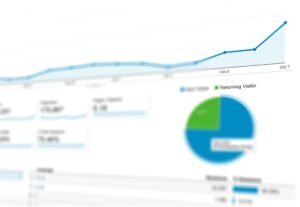Ever wonder how some websites seem to magically appear at the top of Google search results? It’s not just luck—it’s all about SEO backlinks! You read that right: the secret sauce of search engine success. Backlinks are like the cheerleaders of the internet, giving your site a vote of confidence. Just picture your website as the new kid at school. More links from popular “classmates” means more friends, and suddenly, you are on top! So, how do SEO backlinks work, and why do these little connections matter so much? Curious yet? Let’s go!
Understanding SEO Backlinks and Their Role
So, what exactly are SEO backlinks, and why should you care? Think of backlinks like high-fives from one website to another. When a site links to yours, it tells search engines, “Hey, this site is cool and trustworthy!” It’s a way for websites to give each other a thumbs-up, helping Google view your site as credible and worthy of attention.
Let’s break it down further. Imagine your website as a kid in a school play. Backlinks are like having classmates cheer you from the audience. The more friends (or websites) that cheer you on, the more popular and believable you appear to the teacher (search engine). If your classmates are popular kids (reputable sites), your popularity skyrockets even more!
But why do backlinks matter in SEO? Well, search engines use backlinks to judge your site’s trustworthiness and relevance. Quality backlinks from well-known sites can significantly boost your rankings. This means more people find you when searching online. It’s like getting more spotlight time on stage—hello, visibility!
Types of Backlinks in SEO

1. Natural Backlinks
Natural backlinks are like unexpected compliments. They occur organically when someone finds your content so awesome that they share it. These links are the holy grail of SEO since they stem from genuine admiration. Such backlinks signify trust and quality to search engines, boosting your rankings significantly.
2. Manually Built Backlinks
Manually built backlinks require effort and strategy. They’re the outcome of a well-thought-out marketing plan. By reaching out to other site owners through guest blogging or partnerships, they link back to you. These links enhance your website’s authority and visibility. Think of it as networking for your site!
3. Self-Created Backlinks
Self-created backlinks are DIY projects in the backlink world. They arise when you create links yourself, like leaving comments on blogs or adding your site to directories. Be cautious! Overdoing it or using sketchy techniques can damage your SEO, as search engines dislike spammy methods. Ensure these links are relevant and add value.
How to Create Backlinks: Step-by-Step Guide
Creating backlinks is like planting seeds for your small business’s online presence. 🌱 They are vital because they help your site get noticed by search engines, leading to more people finding your business online. Here’s how to build those valuable links.
Content Creation: Create amazing content people can’t resist sharing. Focus on providing value with tips, tutorials, or entertaining stories through blog posts, videos, or infographics. The better your content, the more likely others link to it.
Tip: Be unique and insightful. Original content stands out and gets more attention!
Guest Blogging: Write articles for other websites in your industry. It’s like being a guest star on someone else’s show. Contributing valuable insights to their audience earns you a backlink.
Tip: Target reputable sites and tailor your content to fit their style. It shows you’re a pro!
Influencer Outreach: Connect with influencers who love your niche. They can spread the word about your business. When influencers share your content, their followers may visit your site and link to it.
Tip: Build genuine relationships first. A personalized approach works best!
Building Relationships: Network with other businesses and websites. When you collaborate or share content, you can naturally earn backlinks.
Tip: Be active in online communities related to your field—perfect for potential link partners!
Evaluating Backlink Quality and Risks

Ever wonder how to tell if a backlink is top-notch? Here’s the scoop: quality matters more than quantity. Evaluate them by looking at the source’s authority—like well-known news outlets or respected blogs. Also, check for relevance: Is the linking site’s content related to yours? Relevant links are like getting a thumbs-up from a pro in your field. Consider the link’s placement, too; links in the main content pack more punch than those tucked away in footers.
But wait, there’s a flip side! Low-quality backlinks can hurt your SEO. Risks arise from suspicious or spammy links. If a link looks too good to be true, it probably is. Google can penalize sites using sketchy tactics, so avoid anything that feels off.
Here’s what to avoid:
- Participating in link schemes
- Buying backlinks
- Using automated programs to generate links
Tools for Tracking and Managing Backlinks
Why is tracking backlinks so important, you ask? Imagine improving your grades without checking your report card. Backlinks are like report cards for your website’s SEO. They show how your site is perceived online. Monitoring them helps you understand what works and what doesn’t, boosting rankings and visibility. It’s like having a GPS for your SEO journey, pointing you in the right direction.
Let’s talk tools. Google Search Console and Ahrefs are trusty sidekicks on this mission. Google Search Console identifies who’s linking to you and which pages are loved. Ahrefs dives into your backlink data, from new links to those MIA. The right tool eases backlink management, letting you spot issues early.
Here’s what to look for in a backlink tool:
- Ability to identify new and lost backlinks
- Analysis of domain authority
- Detection of toxic backlinks
Developing a Comprehensive Backlink Strategy

Crafting a backlink strategy is like planning a road trip for your website’s SEO journey. It’s all about knowing your destination and how to get there. Create a roadmap to acquire links from various sources, boosting your site’s credibility. The key is diversity—links from different sources, like blogs, news outlets, and forums, make your backlink profile look natural to search engines.
Align your backlink strategy with SEO goals, like a road trip destination. If you aim to rank for certain keywords, focus on links from relevant sites. This alignment helps search engines recognize your site as an authority. When your strategy supports SEO goals, you’ll see better rankings and visibility.
Implementing Your Backlink Strategy
Once your strategy is mapped, hit the road with practical steps. Set clear goals, like how many backlinks you aim for monthly, tracking growth and impact on rankings. Use tools like Google Analytics to see how these links drive traffic. Watch competitors’ backlinks for new opportunities. By targeting the right sites and measuring progress, your backlink strategy will thrive. Happy link-building!
Conclusion
Backlinks are the secret sauce in boosting your website’s credibility and SEO rankings. They’re like endorsements from other sites saying, “We trust this content!”
We broke down what SEO backlinks are and why they’re crucial for visibility. Plus, we looked at different types and how to create them. You have tips on evaluating their quality and a peek at handy tools to track them.
FAQ
How do SEO backlinks work?
Backlinks are links from one site to another, serving as votes of confidence. They help search engines understand a site’s credibility and relevance, boosting visibility and ranking.
What is a backlink in SEO?
A backlink in SEO is a link from another website pointing to your site. It’s a way for search engines to see your site’s authority and trustworthiness.
How to create backlinks in SEO?
To create backlinks, focus on creating valuable content, guest blogging, and engaging with influencers. Building relationships with other sites is key for acquiring quality backlinks.
What are examples of backlinks in SEO?
Examples of backlinks include links from reputable news sites, mentions in high-authority blogs, and guest post contributions. These links increase a site’s credibility.




